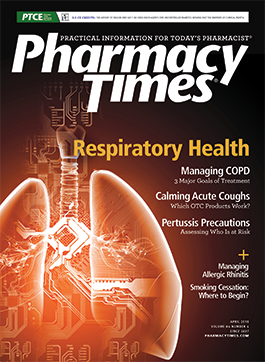Publication
Article
Pharmacy Times
Emergency Department Changes
Author(s):
The emergency department used to be the place for drug shoppers to get their medications, though the number of dosage units was seldom high.
The emergency department (ED) used to be the place for drug shoppers to get their medications, though the number of dosage units was seldom high. They shopped multiple hospitals in search of 2 to 4 doses of hydrocodone or oxycodone, doing some of the best acting this side of Hollywood.
It was rare until several years ago, when prescription monitoring programs (PMPs) cropped up, for anyone to be able to effectively track these ED drug shoppers. Cincinnati was an exception, as we had a fax program that alerted not only other hospital EDs about the tactics of these drug seekers but also our pharmaceutical unit. This was deemed inappropriate at some point, and the practice was discontinued.
If you would have asked any ED employee in those days, they could have told you about these prescription drug seekers and their many ploys for medication. Our unit spent numerous hours tracking down these folks, who made it hard for ED employees to effectively treat legitimate patients because much of their time was spent playing detective. These medical professionals did not go to school for all those years to spend time trying to distinguish legitimate patients from drug seekers, but it came with the territory when working in the ED.
I have said many times that observing the drug shopping in EDs was a very effective way to learn about the desperation of addiction. These people put their bodies through some enormous challenges to score a few hydrocodone.
We had patients who intentionally burned their testicles, aggravated root canal work in the parking lot, and drove large nails into the palms of their hands to show they had legitimate pain so they could obtain a prescription for a few opiates. The extreme to which they would go to feed their addictions was both amazing and sad.
One notable situation that I remember involved a woman who presented in the ED throwing up blood. She was taken back to the examination room with a full syringe of her own blood in her purse. She requested a pan in case she needed to throw up, and the nurse obliged and left the room. During that time, she would squirt the blood from the syringe into her mouth and then wait for the nurse to return and spit out the blood into the pan.
The patient’s goal was to obtain an injection of Demerol, and she succeeded in her quest several times at other EDs using this same method. This time, however, a suspicious nurse noticed the syringe in the woman’s purse and confronted her, and the patient owned up to her ploy.
ED physicians often faced a tricky issue. They were trying to weed out the illegitimate patients so they would not be feeding existing addictions, but they also had to keep management happy. Patients who complained about their non-opiate treatments caught the attention of upper management, and this often resulted in a warning to the physician about customer satisfaction.
Things have changed somewhat over the years. There are still drug shoppers, but their success rate has changed. This is not because the physicians of the past did not care and wrote for excessive amounts but because almost every state now has a PMP. This tool, when used extensively, can assist the decision making of ED personnel so that they are taking care of the patient while not feeding an addiction.
In addition, some EDs are even offering addicted patients an avenue to sobriety while advising them that their departments will no longer supply them with opiates. Giving patients referrals to in-house rehabilitation programs is a great step toward trying to reduce these kinds of bogus visits. An additional advantage is that legitimate patients will spend less time in the waiting room and will receive more attention from the staff, making this a win-win.
Cmdr. John Burke is a 40-year veteran of law enforcement, the past president of the National Association of Drug Diversion Investigators, and the president and cofounder of the International Health Facility Diversion Association. He can be reached by e-mail at burke@rxdiversion.com or via rxdiversion.com.







